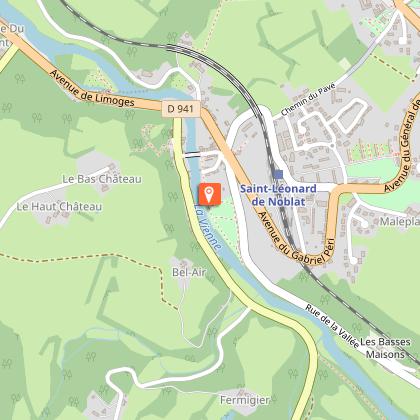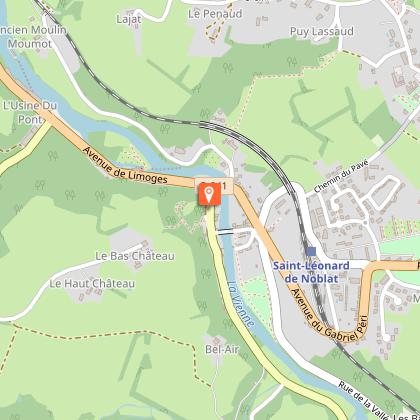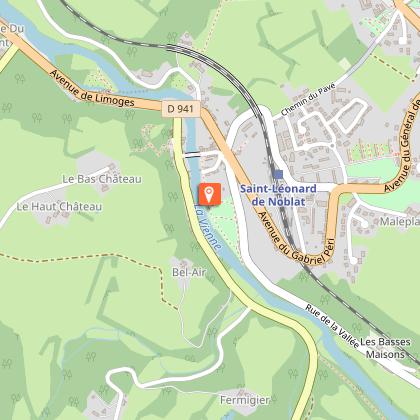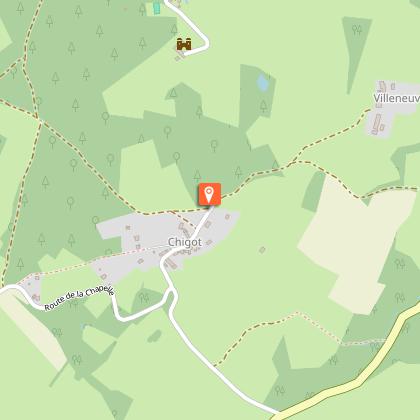Alert
Alerts
Steeples and ponds circuit






IGN cards

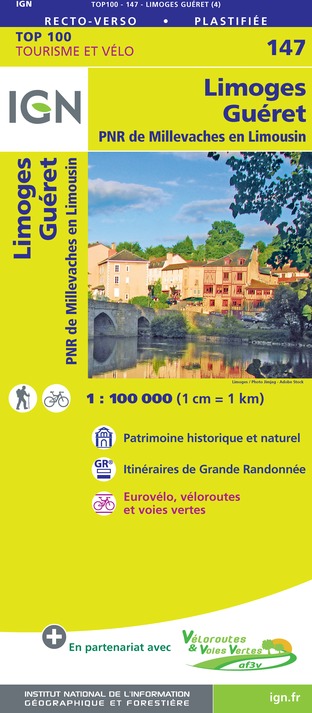



Description
A hike for lovers of local architectural heritage, along the water and rolling landscapes.Follow the path along the Vienne river and head towards the village of Noblat. Pass between the gardens (Place des Chambonnauds) and continue to the right using the small passages between the houses, then to the left. You will arrive at the bridge.Go across it. At the D7bis, turn right. Arriving at the D941, follow it on the left using the pavement, passing in front of the mills of Noblat on the banks of the Vienne.At the first crossroads, turn left. At the end of the porcelain factory, continue up a steep slope and follow the path that climbs to Chigot.At the top of the hill, at the crossing of five paths, at the cross, take the second path on the right. Possible variant.At the crossing, continue straight ahead for 10 mins and then follow the path on the right. In the woods, turn left following the GR 654.At the crossroads, turn left onto the hairpin path.Once you reach a wide path, turn right and then turn left at the next crossing, leaving the farm path to the right. Leave the GR654 on the right and continue straight ahead. At the "y" crossroads, turn right, go past the pond, cross the stream and climb up to the village of Chenour.Pass behind the houses, go left at the last one and follow the small road on the right. Turn around to admire the village.At the crossroads, turn left towards Surzol, and then, 30 mins later, follow the path on the right. Continue and follow the road to the left. Round trip to the Saint-Martin fountain.At the next crossroads in a "T" shape, turn right and continue until the next crossroads with the RD. Continue opposite in the direction of Surzol.Go through the village and follow the pathway that leads to the pond: go along it. Then turn right when you reach the roadway. At the crossroads, turn left until you reach the La Pronche road.Turn left and, after the climb, follow the ridge path to the right. In Beaubiat, turn left. Just before the hamlet of Bel Air, follow the grassy path on the right, going down the small road. At the D7bis, turn left, follow it for 300 metres. In front of the church, turn left, cross the stone bridge and follow the same path as on the way to the starting point.
Technical Information
Altimetric profile
Starting point
Steps
Points of interest
Additional information
Advised parking
Fitness trail car park, Quartier du Pont de Noblat, Saint-Léonard-de-Noblat
Advice
Variante du point 4 : traverser le village de Chigot. Prendre à droite la rue à l’angle du lavoir. Poursuivre, la route se transforme en chemin de terre. A la route, tourner à gauche, traverser le village de la Chapelle. Poursuivre sur la route et au croisement, continuer en face à gauche de la croix. Arrivé avant le Peyret, suivre en face le sentier en terre qui s’enfonce dans le bois. A la route tourner à gauche et reprendre le descriptif au point 10.
Access
25 km from Limoges in the direction of Clermont-Ferrand, via the D941. From the town centre of Saint-Léonard de Noblat, take the D41 towards Limoges then, after crossing the railway, turn left, Rue de la Vallée on the D39A.
Ambiance
Starting from the old quarter of Le Pont de Noblat, on the banks of the Vienne river and after crossing the medieval bridge, the trail gradually leads up through the countryside, revealing beautiful panoramas of the historic city of Saint-Léonard de Noblat (Plus Beaux Détours de France, an outstanding heritage site). The path goes through the villages of Chigot, Chenour, La Chapelle, and Le Surzol between traditional local buildings, peaceful ponds and lively watercourses.
Arrival
Fitness trail car park, Saint-Léonard-de-Noblat
Departure
Fitness trail car park, Saint-Léonard-de-Noblat
